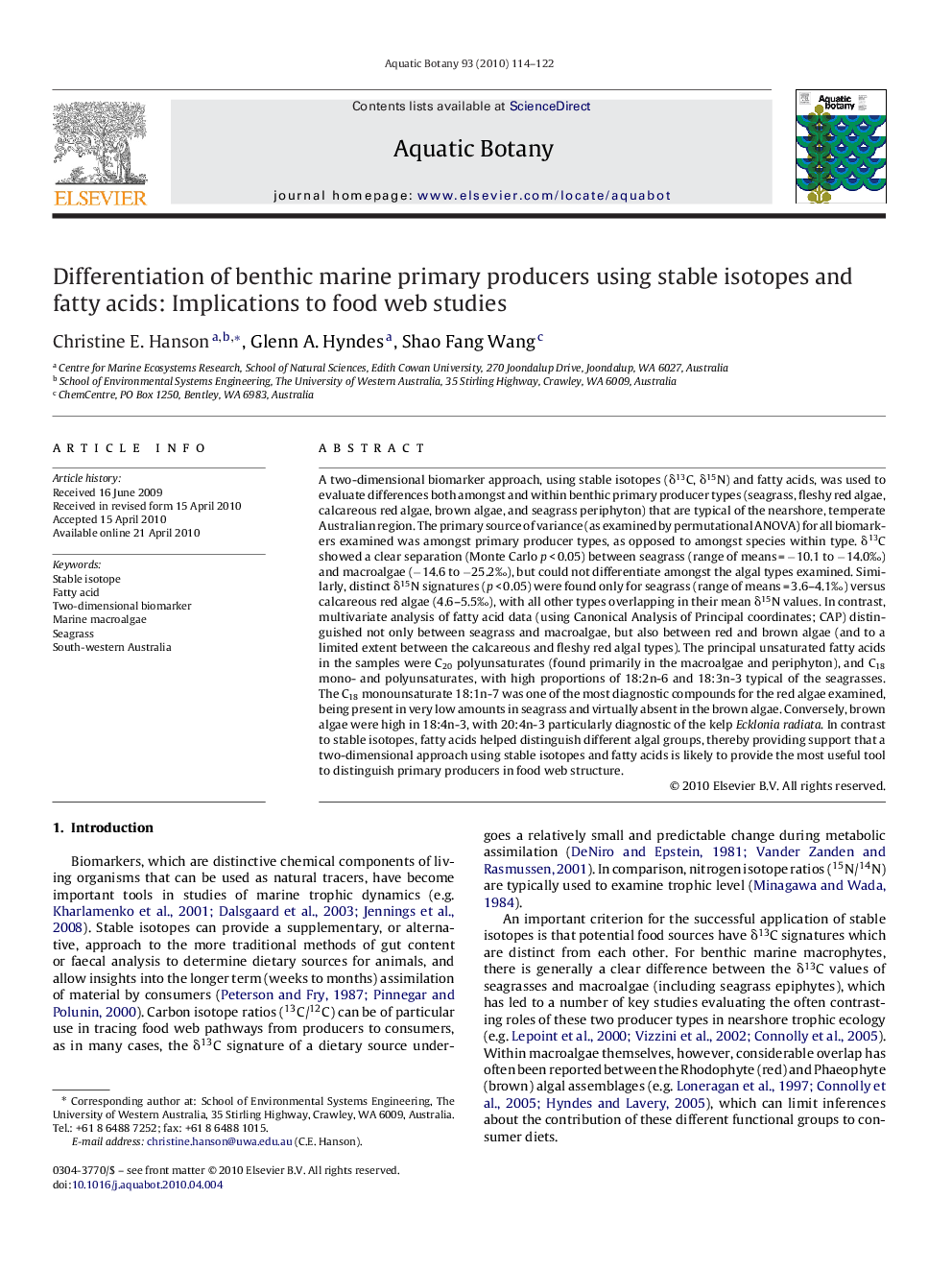| Article ID | Journal | Published Year | Pages | File Type |
|---|---|---|---|---|
| 4528289 | Aquatic Botany | 2010 | 9 Pages |
A two-dimensional biomarker approach, using stable isotopes (δ13C, δ15N) and fatty acids, was used to evaluate differences both amongst and within benthic primary producer types (seagrass, fleshy red algae, calcareous red algae, brown algae, and seagrass periphyton) that are typical of the nearshore, temperate Australian region. The primary source of variance (as examined by permutational ANOVA) for all biomarkers examined was amongst primary producer types, as opposed to amongst species within type. δ13C showed a clear separation (Monte Carlo p < 0.05) between seagrass (range of means = −10.1 to −14.0‰) and macroalgae (−14.6 to −25.2‰), but could not differentiate amongst the algal types examined. Similarly, distinct δ15N signatures (p < 0.05) were found only for seagrass (range of means = 3.6–4.1‰) versus calcareous red algae (4.6–5.5‰), with all other types overlapping in their mean δ15N values. In contrast, multivariate analysis of fatty acid data (using Canonical Analysis of Principal coordinates; CAP) distinguished not only between seagrass and macroalgae, but also between red and brown algae (and to a limited extent between the calcareous and fleshy red algal types). The principal unsaturated fatty acids in the samples were C20 polyunsaturates (found primarily in the macroalgae and periphyton), and C18 mono- and polyunsaturates, with high proportions of 18:2n-6 and 18:3n-3 typical of the seagrasses. The C18 monounsaturate 18:1n-7 was one of the most diagnostic compounds for the red algae examined, being present in very low amounts in seagrass and virtually absent in the brown algae. Conversely, brown algae were high in 18:4n-3, with 20:4n-3 particularly diagnostic of the kelp Ecklonia radiata. In contrast to stable isotopes, fatty acids helped distinguish different algal groups, thereby providing support that a two-dimensional approach using stable isotopes and fatty acids is likely to provide the most useful tool to distinguish primary producers in food web structure.
